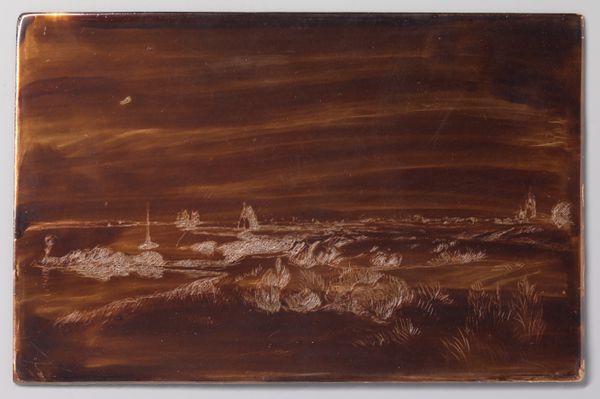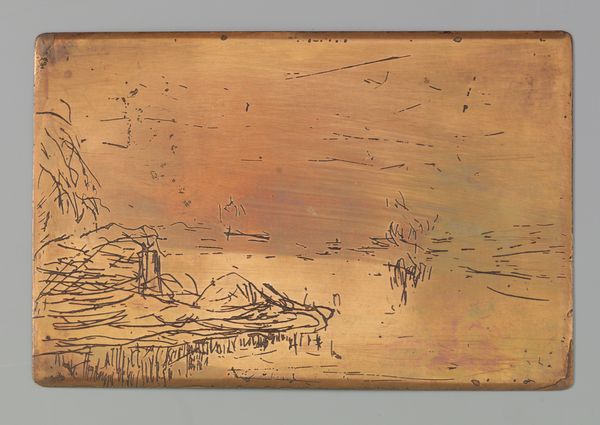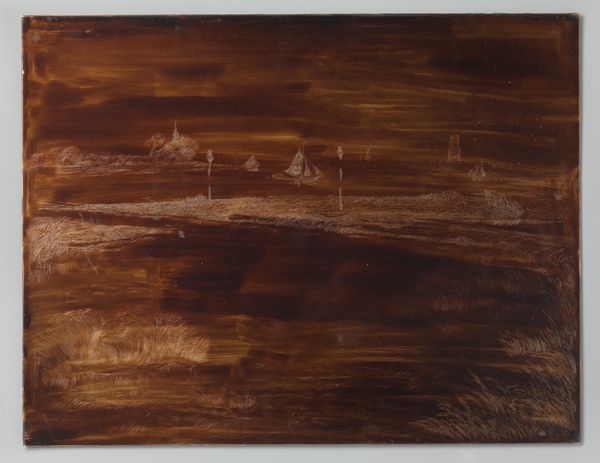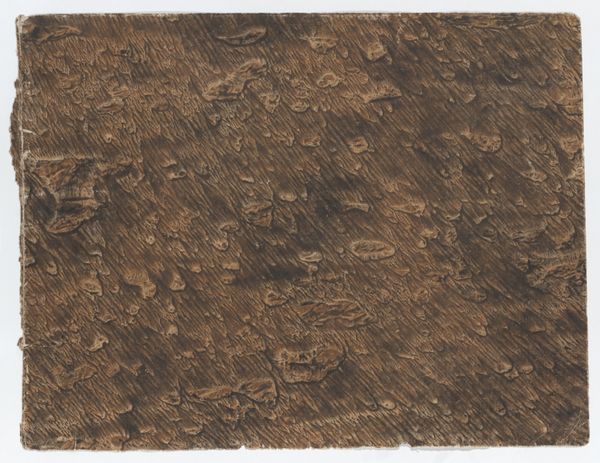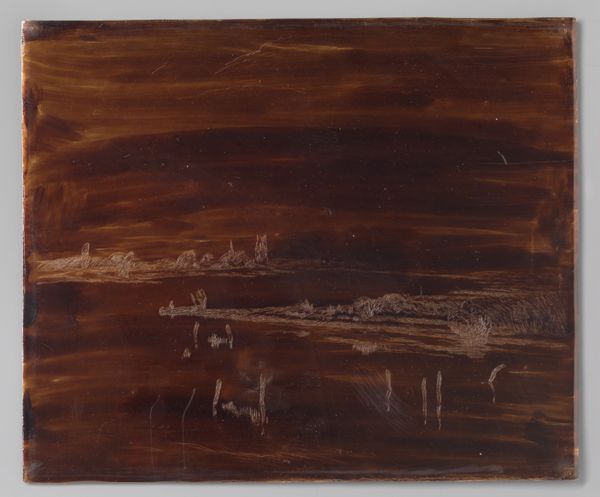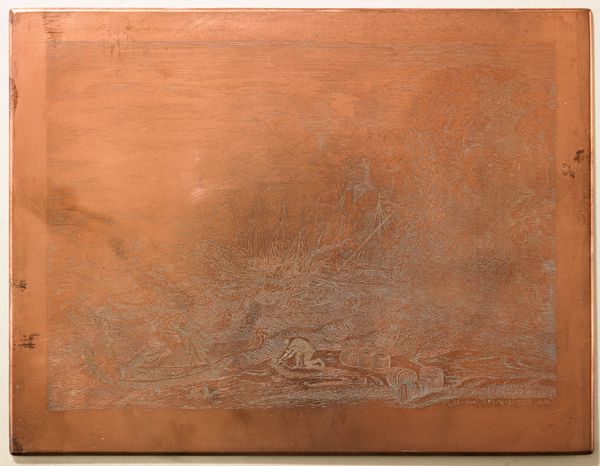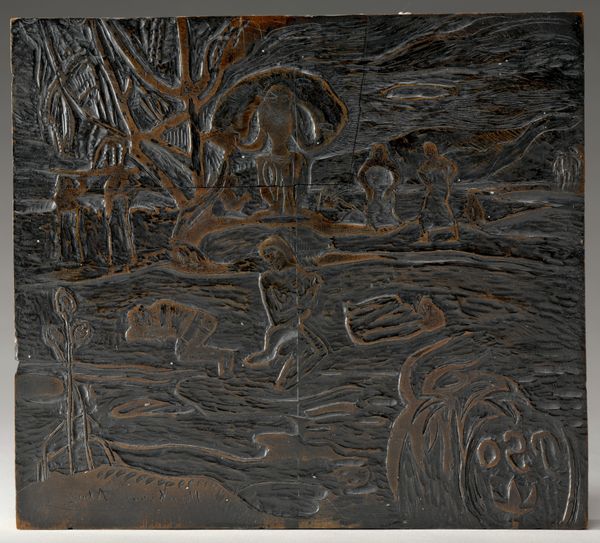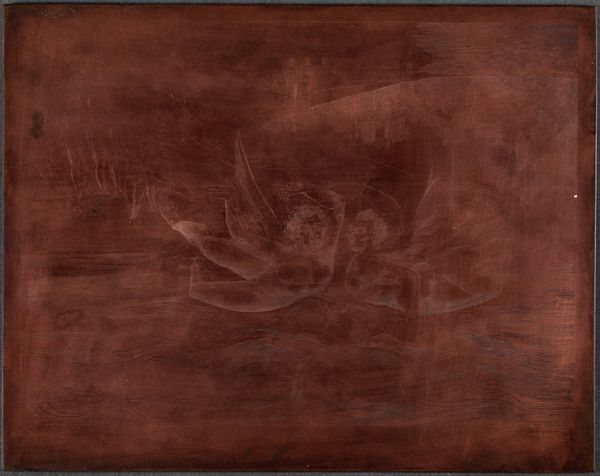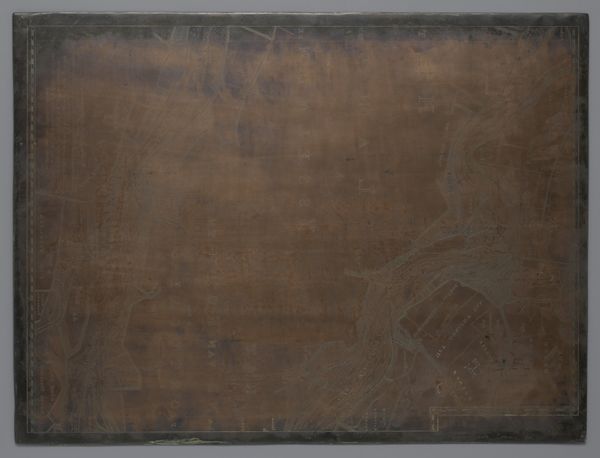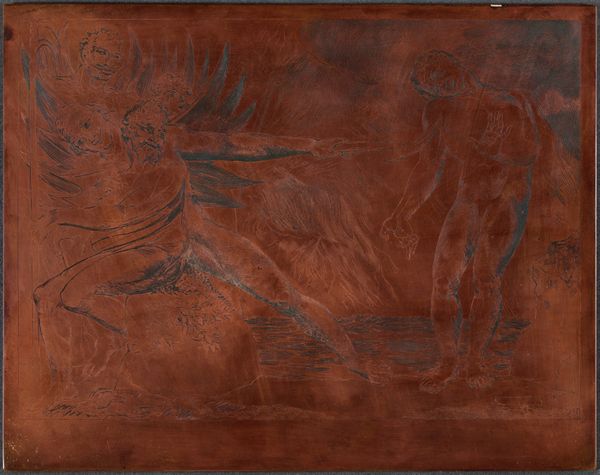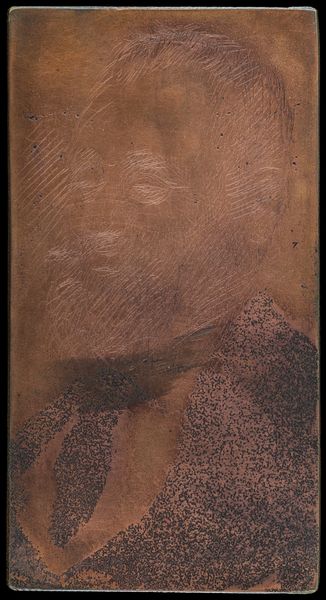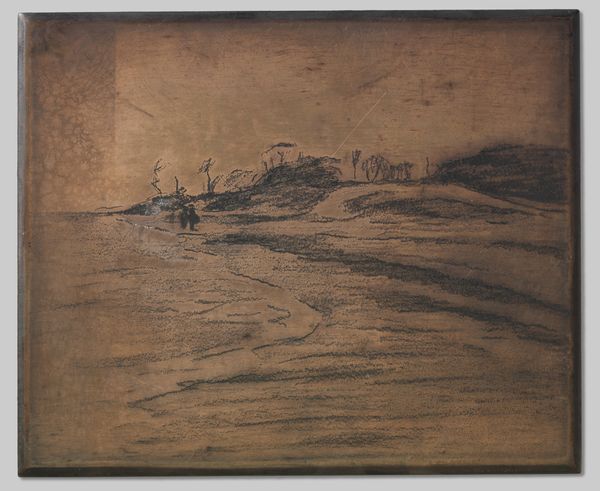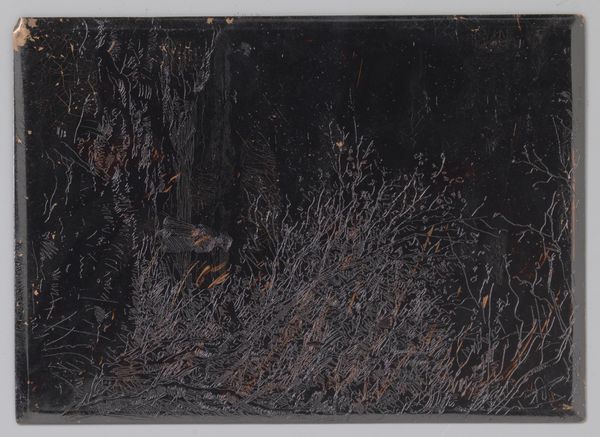
Dimensions: height 127 mm, width 197 mm
Copyright: Rijks Museum: Open Domain
Editor: This is "River Landscape with Sailboat" painted by Antoon Derkzen van Angeren in 1926 using oil paint. It feels…sepia-toned, almost like a faded photograph. It looks quite abstract, and maybe a bit gloomy, but I’m curious – how do you interpret this work? Curator: Well, immediately I’m drawn to its historical context. Considering it was painted in 1926, what socio-political currents were influencing artistic expression at the time? The near-monochrome palette and the subdued brushwork, the "Dutch Golden Age" tag, might reflect a societal mood, perhaps a nostalgia for a perceived "simpler time" in the face of rapid industrialisation and post-war anxieties. Editor: That’s interesting. So, it could be a commentary on the changing landscape, both literally and figuratively? Curator: Precisely! Think about it: this work has been exhibited, viewed, and interpreted within the confines of galleries and museums. These institutions, too, play a part in shaping our understanding of the image. It makes one wonder who chose it for the gallery and why. And more important - who bought it! Were there other artworks from the same period which tackled the new landscapes brought by the societal and industrial innovations, making Angeren chose instead to reflect back at tradition? What statements might be done for or against this social turn? Editor: That’s a perspective I hadn’t considered. I was focused on the landscape itself, the suggestion of the sailboat on the horizon. Curator: But how does that landscape function, beyond its literal representation? Consider its public role – how it presents ideas about the natural environment and our relationship to it. Is this "golden age" representation just appealing to certain viewers for economical reason or does it involve a deeper appreciation of times gone? What imagery could be deemed fit for social commentary during this particular point in history? Editor: This makes me wonder how audiences at the time received this compared to today’s audience! Curator: Exactly! Our dialogue here, like every other encounter with art, shows that the work never speaks just for itself. Thanks to our reflection, it becomes a dialogue that helps us perceive its social context! Editor: It also reveals to me my limited appreciation for that context. Definitely gave me something to think about.
Comments
No comments
Be the first to comment and join the conversation on the ultimate creative platform.

